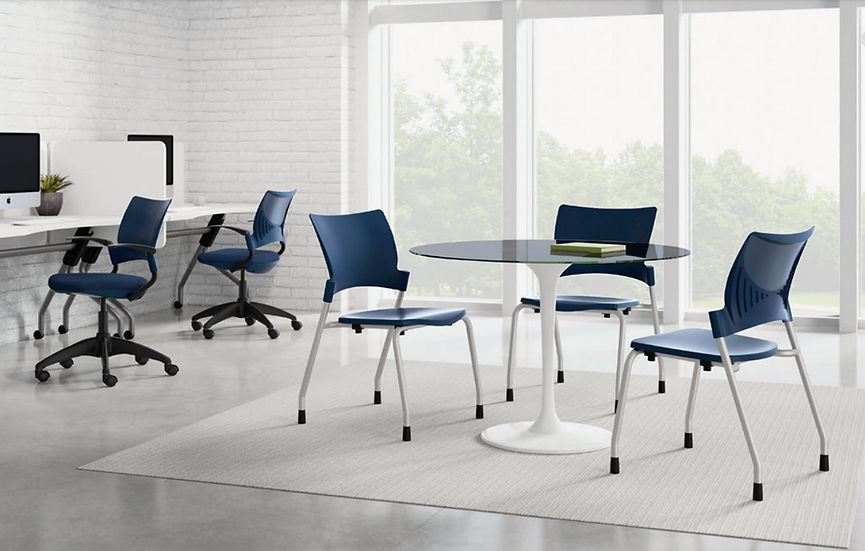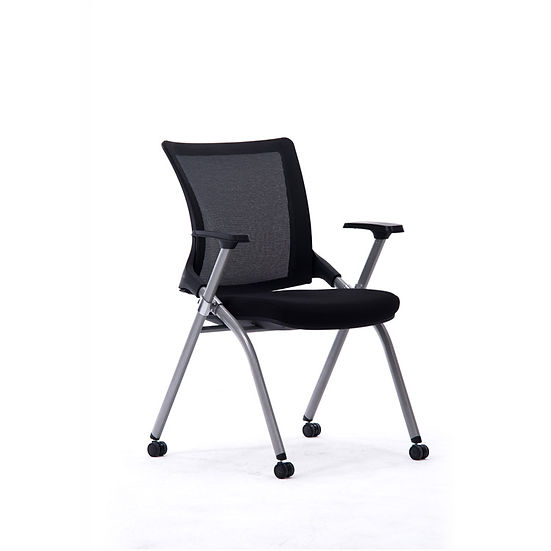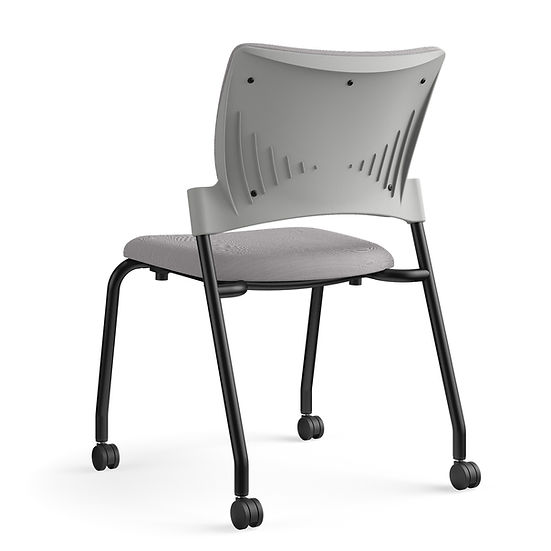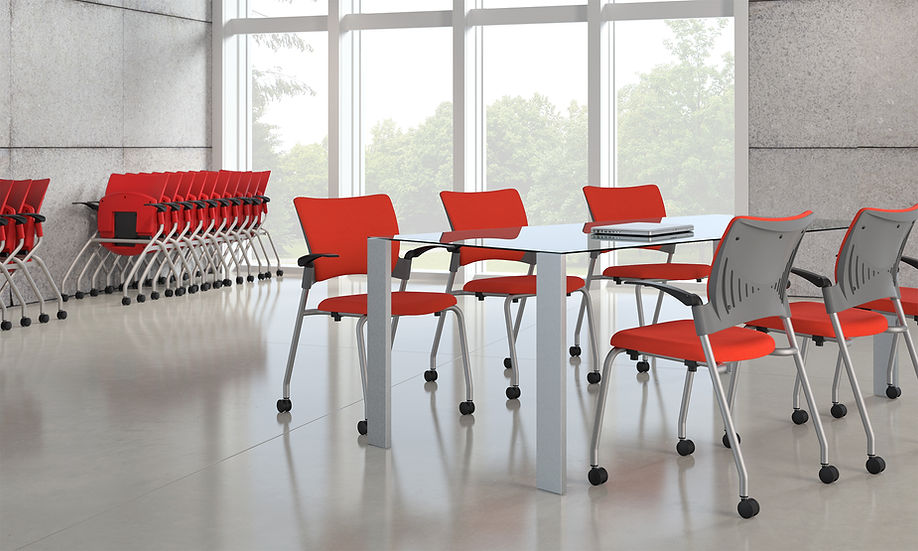
In many office spaces, collaboration and adaptability are two of the most important factors for achieving high quality work and productivity. Office furniture and interior design are aspects that impact how employees engage with others in the workspace, and office chairs are no exception. Particularly, the training chair provides unique advantages compared to traditional office chairs as they are ergonomic and versatile. In this blog post, we will explore the factors to consider before implementing the training chair into your office design.
What is the Training Chair?
The training chair is a versatile seating solution that combines elements of ergonomics with flexibility and mobility. Unlike traditional office chairs, training chairs are lightweight, compact, and often feature a swivel base. They are designed to facilitate movement, making them ideal for dynamic and collaborative work environments. For example, Movado Interiors offer their Hades training chair that is composed of a mesh back and mesh seat, adjustable lumbar support, and dual wheel casters.

Key Features of Training Chairs
1. Mobility
One of the defining features of training chairs is their mobility. Equipped with wheels, these office chairs allow users to move around easily without the need to lift or carry the chair. This feature is particularly beneficial in collaborative office spaces where spontaneous discussions or impromptu meetings may occur. It allows for convenience and adaptability in the workspace.

2. Swivel Base
Many training chairs feature a swivel base, allowing users to rotate the chair easily. The swivel base of training chairs isn’t just about spin as it also promotes dynamic posture changes. Users can easily rotate to reach different parts of their workspace without straining, reducing the risk of stiffness associated with prolonged periods of sitting in a fixed position. Additionally, the swivel feature of the office chair enhances accessibility, making it easier to reach for documents, engage in multitasking, or collaborate with team members without the constraints of a stationary chair.
3. Adjustability
While training chairs are not as adjustable as some high-end ergonomic chairs, they often come with basic height adjustment features to accommodate users of different sizes. This allows users to customize the chair to their preferred seating height, contributing to a more comfortable and ergonomic experience. It also ensures that it can cater to a diverse range of users.
Benefits of Training Chairs
1. Space Efficiency
Training chairs are often more compact than traditional office chairs, making them suitable for smaller workspaces or areas with a need for frequent rearrangement. These chairs can be neatly stacked or nested, reducing clutter and creating a cleaner, more organized workspace. This is especially advantageous in areas with fluctuating seating demands. Moreover, the space efficiency of training chairs allows companies to re-arrange rooms more easily. Whether it’s setting up a training session, rearranging a collaborative workspace, or preparing for an event, the ease of handling and storing these types of office chairs enhances the overall flexibility of the office layout.
2. Collaborative Workspaces
The mobility of training chairs turns static workspaces into hubs of communication and creative discussions. Employees can easily move their office chairs to collaborate with team members, which fosters a culture of spontaneity and innovation. Colleagues can quickly gather for brainstorming sessions or collaborative problem-solving. Moreover, training chairs contribute to a more open and inviting atmosphere. With the ability to move freely, team members can establish eye contact, share ideas, and build stronger connections. This enhanced interaction not only improves teamwork but also creates a positive and engaging work environment.

3. Employee Well-being
Many office workers are sedentary for most of the day, which is not the healthiest for their mind, body, and productivity. However, training chairs have an emphasis on mobility, allowing employees to change their posture, shift positions, and even stand up easily, which reduces the risk of musculoskeletal discomfort and promotes better overall well-being.
Limitations of Training Chairs
1. Limited Adjustability
While training chairs offer basic adjustability features, they may not cater to individuals with specific ergonomic preferences or requirements. Some employees may have distinct needs for lumbar support, armrest adjustments, or other customizable features found in more advanced ergonomic chairs, which training chairs unfortunately do not offer. Additionally, for users who prioritize a highly customizable office chair, the relatively limited adjustability of training chairs may be a drawback. Organizations need to balance the desire for mobility and simplicity with the individual comfort needs of their employees.
2. Durability concerns
The lightweight and compact design of training chairs are advantageous for mobility, but may raise concerns about their durability in high-traffic areas. Constant movement and potential collisions may result in busy workspaces, and this could impact the long-term resilience of these office chairs. In addition, the durability of training chairs is also influenced by the quality of materials used in their construction. Companies need to carefully assess the materials of training chairs to ensure they can withstand the rigors of daily use without compromising on comfort or safety.
3. User preferences
Employees have varied preferences when it comes to seating comfort. While some may appreciate the mobility and adaptability of training chairs, others may have a preference for more traditional, stationary office chairs with a broader range of ergonomic features. It is difficult to accommodate the needs and preferences of all employees, and companies could consider providing a mix of seating options within the office space. Understanding the diverse needs of employees and incorporating a variety of chairs, including training chairs and more traditional options, can help strike a balance that accommodates different work styles.
Conclusion
Overall, training chairs are designed to meet the demands of modern, collaborative workspaces. Their mobility and compact design make them well-suited for a variety of settings, contributing to a dynamic and engaging work environment. When selecting office chairs for the workplace, it’s important to also consider the specific needs of the organization, considering factors such as employee preferences and the nature of daily activities.
